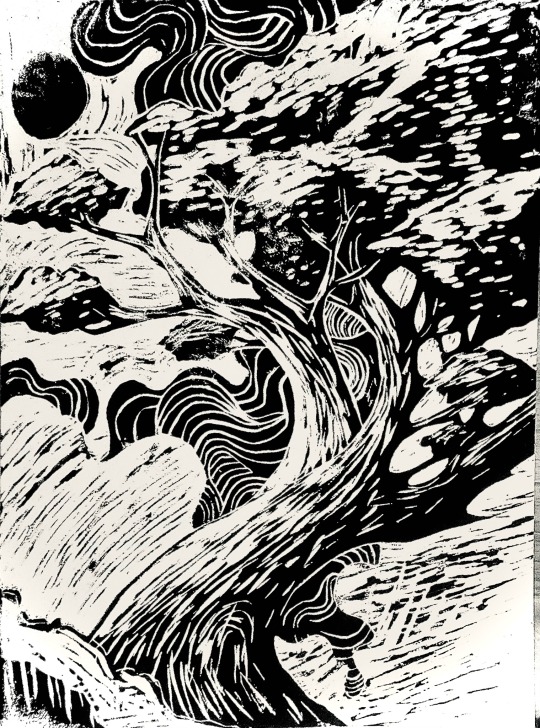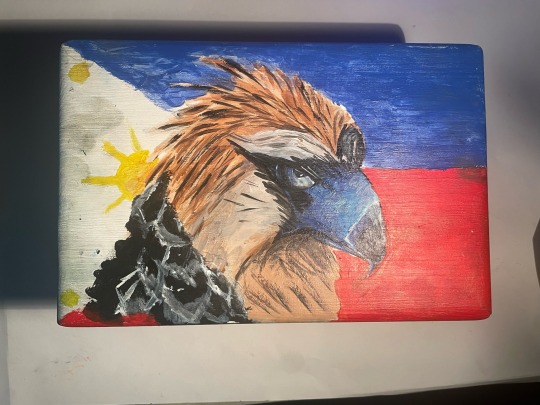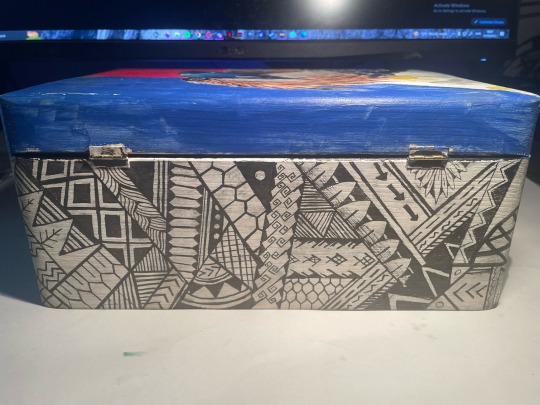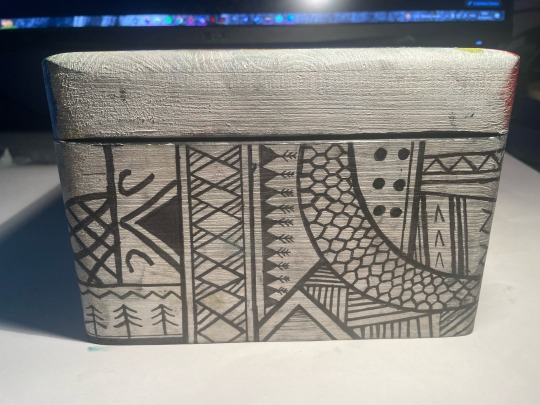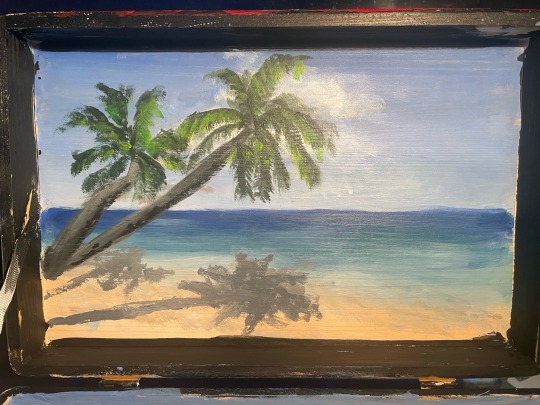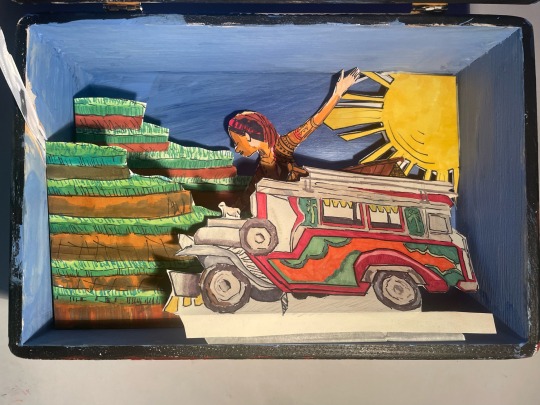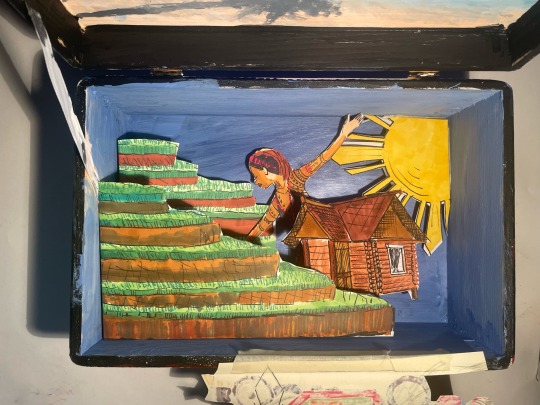Text
Trese
Trese is a Filipino comic book series created by Budjette Tan and artist Kajo Baldisimo. It is centred around a detective who deals with supernatural beings in Manila. These often consist of mythical creatures and folklore elements from Filipino culture. Trese - the detective - meets all different types of fantastical creatures in Philippine mythology, even the Tikbalang which was previously talked about in my previous post (Davis, 2021). Having not really seen much of Filipino history, and lack of representation outside of stereotypes, in modern shows and series, this really stuck out to me. They have animated the comic series and released it on Netflix, becoming very popular and teaching people about the mythical creatures inspiring my drawings. The creators of the show hope to pave the way for more Filipino animated films and series, to tell more stories just as great from the Philippines. I wanted to add to this by taking these mythical creatures, creating lino prints and retelling the story through a sequence of prints. Even before it was animated, as a comic, it was a great showcasing of Filipinos and the cultural diversity within the Philippines and another reason it became so popular in the western world was due to the mix of influence from Asian mangas and Western comics, which interested many.
Trese, even being based in Manila and using the names of the mythical creatures, it is an 18+ horror anime, with constant crime happening and thriller scenes. The first episode talks about the Aswang pack, which consists of the mythical creatures fighting Trese. They are depicted as humans. She then goes on to gouge the eye and cast a spell to find where the spirit originated from. In this show, they speak Tagalog and even show the rural areas of Philippines, so I think it is a good representation of the country and the spiritual and cultural beliefs. The only issue with it being a horror anime is that it is targeted to an older and more mature demographic, not many people will watch outside of that age range, older adults and younger people will not see the representation, which is one limitation of this series. My illustrations are meant to be simplistic in nature so that many can view the drawings and see how they belong to Filipino culture. The storyline is simplified in my prints, but they contained enough information to convey the key aspects behind each creature.
The difference between Trese as a series and my illustrations is that Trese is set in Manila, there are places set in Philippines, the Guadalupe bridge, and more, all show parts of Philippines, presenting the Philippines as a whole with the creatures, whereas mine just details the stories, giving depth and richness to each creature, whereas Trese just depicts all the scary mythic creatures as monsters that she saves the civilians from.
One of the main villains in the series is the Aswang and the Aswang clan. At first, they are depicted as humanistic creatures, disguising themselves in human clothing but with their facial features. In Filipino mythology, they are known as vampires, ghouls, and transforming human-beast hybrids (Winiarski, 2022), normally their victims are children and unborn foetuses, but they also hunt victims that are alone at night, which is what is shown in Trese. Upon watching it, I found the anime to be very gory and explicit, however, the depiction of the beast is very accurate in this anime. The art style is very simplistic but they drew the aswang very well, showing the ears and main characteristics of the aswang in an evil way to show that they are devilish in nature. In the first episode, three women fell victim to the aswangs in a train, and this perfectly depicts how aswangs attack.
Ibong adarna’s story:
The story of Ibong Adarna is a folklore tale. The narrative is based on the lives of King Fernando, who falls sick. His three sons, Pedro, Diego, and Juan, set out to capture the Adarna - believing that it would heal their father, King Fernando. The quest does not prove to be easy, the mythic land of the forest contains many challenges, creatures and disputes. Over the course of the journey, the brothers bond and help each other, showing lessons of honour and humility. As Juan captures the Ibong Adarna, the brothers Pedro and Diego end up beating Juan up, leaving him on the side of the road. They then lie to the King, their father, and claim they do not know of his whereabouts. Juan eventually returns and forgives them despite this.
After this, the king then gives Pedro and Diego the task of watching the Ibong Adarna, but they grow envious of Juan, so they trick him into believing that the Ibong Adarna escaped. Juan sets off to find the bird, but the truth is revealed. The two brothers are set to be banished, but are spared due to Juan’s forgiving nature. My illustration focuses mainly on the Ibong Adarna as a creature rather than the whole tale and the brothers.
I depicted the story in this way:
- The first lino introduces the scene of a grand castle, King X’s, showing the landscape.
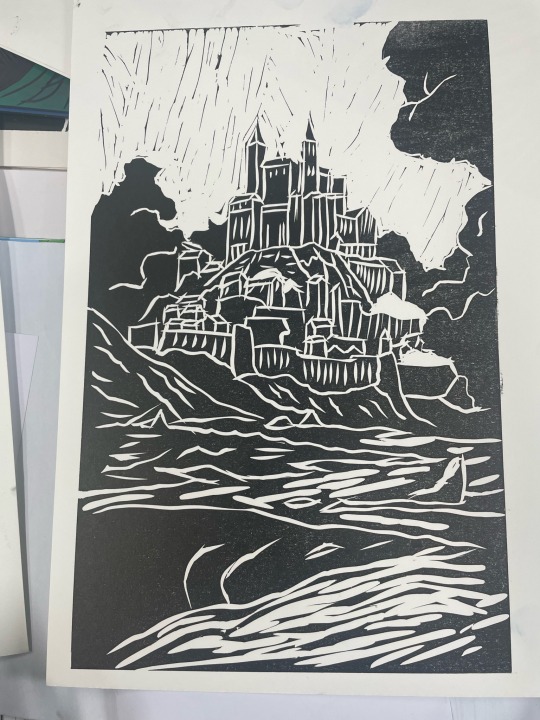
- The second print portrays the king in his bed, unwell, alone and weak.
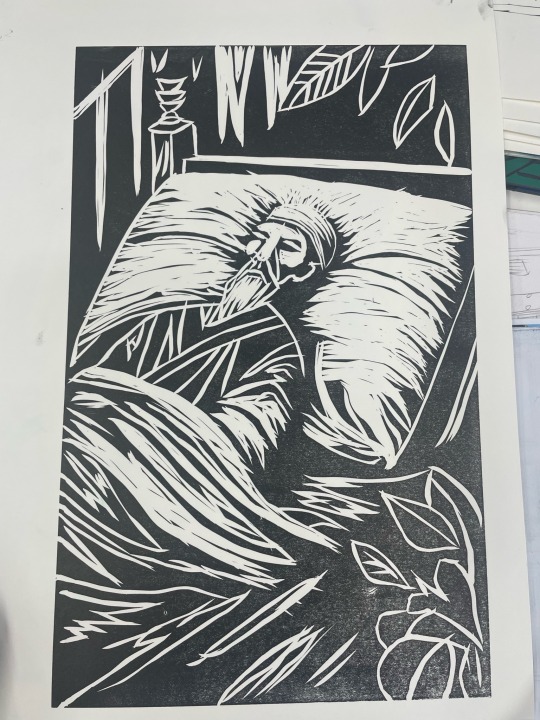
- The third print introduces the three brothers who set out to seek the Ibong Adarna, believing it would heal their sick father.
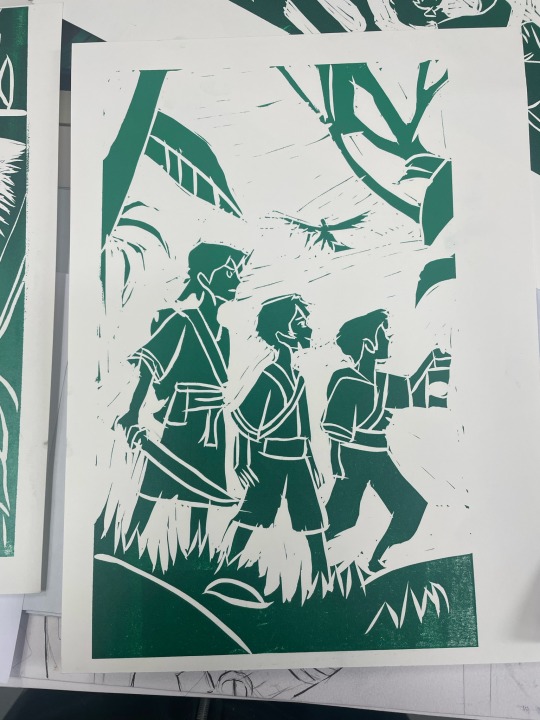
- The fourth lino presents the Ibong Adarna, looking majestic in front of the brother with the cage. The brother hopes that it will heal his father from his illness.
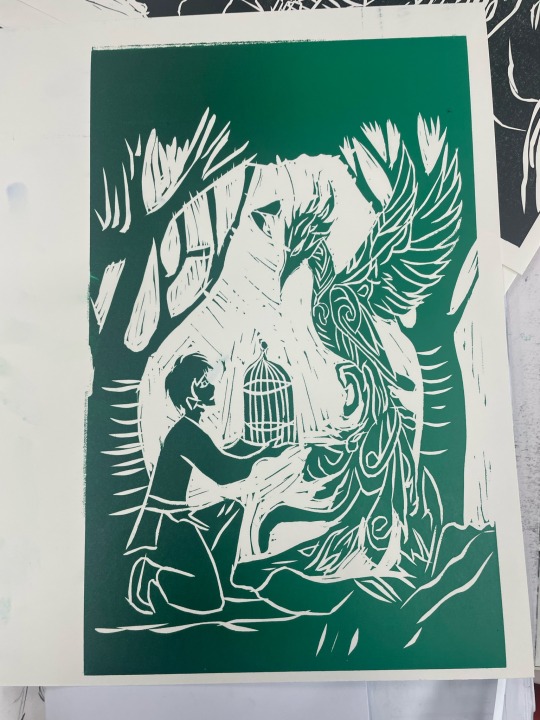
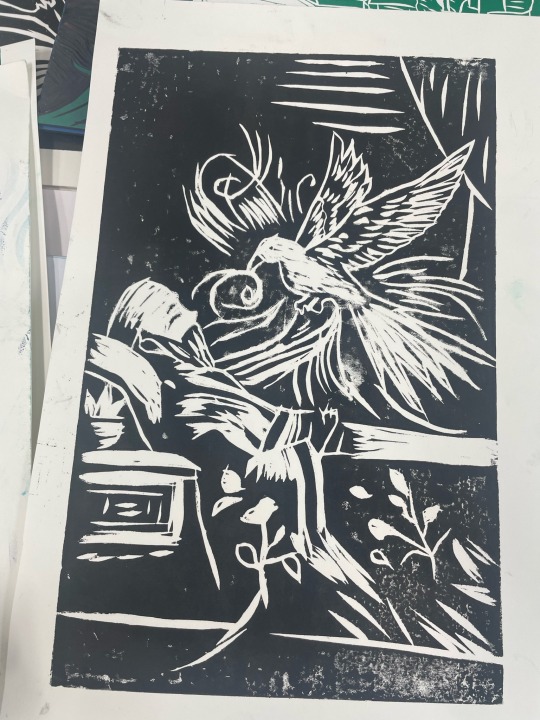
Folklore and general influence:
Folklore is normally seen as something of a culture that has unreal and unserious
superstitions, even outdated tales to some people. Many people don’t see how various folklore affects everyone universally, passed down from generation to generation to tell a story, which in turn teaches about diverse cultures. A study by Dahal and Bhatta (2021) showed the reflection of folklore on Nepalese students. They found that these folktales often helped younger children find the concepts of what is good and right in the world. In their conclusion, they state the following: “Folktales represent common forms of literature that are used in the classroom as conscience stories to communicate behavioural expectations to youngsters.”. It is common for children to be taught made-up stories and folklore, ranging from Robin Hood to the Ibong Adarna to teach them good deeds, or the Tikbalang to teach them dangerous issues. This is why illustrating the stories of mythical creatures, I hope that people can recognise the drawings and understand the morals they hold, what they represent and the significance they hold towards Filipino culture, conveying how diverse our culture is.
Reference list:
- Dahal, H., & Bhatta, B. (2021). Folktales: A Moral Message from the Past to the Future Generation. Nepal Journal of Multidisciplinary Research, 4(1), 31–43. https://doi.org/10.3126/njmr.v4i1.36618
- Davis, V. (2021, June 10). “Trese” Vividly Brings Mythical Beasts of Filipino Folklore to Life. Animation World Network. https://www.awn.com/animationworld/trese-vividly-brings-mythical-beasts-filipino-folklore-life
- Winiarski, K. (2022, October 6). Inside The Disturbing Legend Of The Aswang, The Bloodsucking, Fetus-Eating Monster Of Filipino Folklore. All That’s Interesting. https://allthatsinteresting.com/aswang#:~:text=It%20goes%20about%20among%20humans
0 notes
Text
In this project, my focus lies on exploring the concept of identity through Filipino folklore. Initially, I wanted to investigate the origins of Filipino tattoos, stemming from my heritage. However, during discussions with my tutor, Paul, who specialises in graphic media, he encouraged me to delve deeper into the idea of Filipino folklore and its rich tapestry of mythical tales. This shift in direction allows me to look at narratives that portray Filipino folklore, offering a broader perspective on cultural identity. I decided to expand further with this topic as I am interested in learning about the many roots of my country's origin and identity. As I read and study deeper into understanding Filipino identity, it's becoming clear from the sources that centuries of history, like migration, trade, and colonisation, have greatly shaped it. These sources highlight how diverse the Philippines is and that there isn't just one Filipino identity because of its many communities and islands. Looking at how colonialism affected Indigenous Peoples shows the tough fights they've had to reclaim their land, culture, and heritage. Additionally, the sources examine the role that mythical animals and folklore play in Filipino society, emphasising their ongoing influence and role in contributing to a common history and customs. They emphasise that to strengthen Filipino identity, it is critical to recognise historical injustices and promote togetherness and unity. The sources depict Filipino identity as a variety of stories and influences that portray rich cultural material.
Studies of post-colonial texts revealed that the illustrations of Ibong Adarna embody myths that perpetuate post-colonialism: ”The typologies of post-colonial texts revealed that the illustrations of Ibong Adarna embody myths that perpetuate post-colonialism. In the Philippine context, the myths highlight the superiority of foreign cultures as compared to the native one.” (Torres, 2007). In the Philippine context, the myths highlight the superiority of foreign cultures as compared to the native ones. The Ibong Adarna is a mythical creature sought by three sons for healing and magical abilities. The sons’ quest for identity, is one of the central themes of the story, which proves a challenging quest under external forces (Rodriguez, 1933). Some interpretations of this story allude to the idea that the external forces had to do with the Filipino experience under colonial rule, the suppression of native and indigenous culture and practices as colonial cultures dominated. The three sons continuously face hardships during the story, very similar to situations faced by Filipinos during colonial rule. The occupation of the Philippines was a period during which most of these stories were written. When the Ibong Adarna was first published as a story traces back to the 16th century, despite being published during the 19th century, which is when America gained control over the Philippines, giving them the freedom of thought and expression that was held back during Spanish occupation: “It is during this Magellan era that most of the simple and homely moral legends and myths were perceived. Though many were not written down until a later period, they nevertheless unmistakably belong to the earlier era.” (Eslit, 2023). After reading some texts, I interpreted the publishing and creation of Filipino folklore tales as those who lived through the Spanish occupation, creating stories as an outlet to express the struggles and hardships they faced during their occupation and publishing them under American occupation, which created stories such as the Ibong Adarna. As Filipinos spread due to diaspora, they took their stories and tales with them, teaching people messages about their culture and history through the subtexts of these stories. My interest in the diaspora is because as generations pass, the richness of culture and diversity lessens over time. I want my illustrations to depict the history of the Philippines.
The teaching of Folklore means the retention of culture can be maintained. Through retelling these tales, Filipinos can strengthen their sense of belonging and identity, fostering solidarity and cohesion within society. The sense of unity it brings is helpful to bring communities together, which is why I wanted to base my project on this to bring people closer through their heritage through my illustrations. There is also an importance in preserving heritage, as it provides an insight into the past from a point of view that we would not be able to access without these tales (Cultural Heritage Theory). Folklore often reflects the issues and concerns of society at the time and passed through many populations. Filipino Authors have noted that folklore tales can help bridge the gap between different generations, as elders can recall the importance of such stories to the younger generation. Not only do these tales serve the purpose of unity, but it also has teachings. there are many meanings behind every story. For example, the Ibong Adarna teaches people to be kind to one another, be selfless and honest and your generosity will be returned to you. This is one of the key teachings in Filipino culture, to help anyone and always be kind and honest, folklore can aid and support people in finding their moral compass, helping people make ethical-based decisions and guiding social interactions.
Carlos "Botong" Francisco
Filipino folklore has been a highly important piece of culture for ages, tying together stories of myth and custom that have a profound emotional impact on the people of the country. Filipino folklore places great value on Carlos "Botong" Francisco's creative output because of the skill with which he incorporated aspects of Filipino history, customs, and traditions into his works. His representation of mythical animals like the tikbalang, manananggal, kapre, mangkukulam, and nuno demonstrates his deep connection to Philippine myth culture. Francisco preserved these folktales and enhanced the rich tapestry of Filipino imagery by skillfully incorporating these legendary beings into his works of art. The stories and characters that are so deeply embedded in the Filipino psyche are captured in his artworks, which serve as tangible representations of the nation's mythology. Francisco has demonstrated through his masterful interpretations how important Philippine folklore has always been in forming the country's cultural legacy. (Clark, 2016).
Francisco's unique creative style—characterized by vibrant ethnic colours, wavy lines, and intricate patterns—was crucial in establishing the Philippines' distinctive visual identity. Drawing on the rich tapestry of Filipino customs, cultures, and everyday life, Botong Francisco's artwork fostered a strong feeling of national identity and pride in the Philippines. He created visual narratives through his paintings that supported Filipinos' feelings of cultural pride and their links to their history. The main thing that defines Botong Francisco's legacy in the Philippines is his capacity to capture the spirit of the Filipino people and pass down through art timeless tales, customs, and morals that are cherished by all ages. In addition to improving the Philippines' artistic environment, his contributions were important in helping the country's citizens develop a strong feeling of cultural identity and pride (Moya, 2021).

(Philippine art gallery, 1914-1969)
(Leon Art Gallery)
This is the Tikbalang, a mythical creature with humanistic limbs but the torso and head of a horse. It is said to be asleep during the day and in the night it dwells around the trees, leading people out and alone to play tricks on them. The Tikbalang is seen as a folkloric demon and smells of burning hair, ominously hiding in quiet locations. I see the Tikbalang as a fast-paced, cunning and mysterious creature. Looking at this illustration of this demon can create an unsettling feeling, and rightly so, as it has some characteristics of a human mixed with an animal, which is quite peculiar to see. Seeing illustrations such as the Tikbalang may be intriguing and viewers may want to explore and look further into the folklore and mythology to see more creatures, as their curiosity peaks.
Whang Od
Both Filipino Folklore and Whang Od - an artist I chose to focus on - have been deeply involved in culture and identity in the Philippines (Commoner, 2021). Whang Od’s impact on the culture has been so significant that there are tales of her greatness, mixing her stories with a folklore style to describe her journeys. The skill possessed by Whang Od in her “Batok” tattooing style gave her status as a legend throughout the country. She spread the meaning behind her mission and her tattoos openly, expressing the importance of staying connected to the past and history of the Philippines. Whang Od has become a symbol of cultural continuity and resistance against cultural erosion and surviving centuries of colonisation, possessing amiable qualities other Filipinos can look up to (Perez, 2023), similar to folklores, which teach good meanings and help preserve culture through showing examples in stories. I want my illustrations to have meanings and reasons behind them connected deeply to folklore. Whang Od’s art is a good example of this; When someone recognises her Batok art, they understand the meaning of the lines and the purpose behind her work. I wish for my illustrations to have a strong tie to culture and make people feel the depth and vastness of the Philippines, even with Filipinos being spread around due to diaspora, they can look at Whang Od’s art and feel a sense of belonging and representation (Borbon, 2023).
Whang Od’s Batok tattoos all hold a large significance - to those who wear them and to the culture. Whang Od creates many different tattoo styles, but they all have the same lines and design she uses yet they differ in meaning, all providing a different narrative through the symbols, signs and other parts such as the sun, the moon and more. The tattoos she provides all tell a story. A milestone, an important part of someone’s life, even to commemorate another person’s life, she adds her style and creates a beautiful piece, sticking to her tradition of using bamboo, a thorn or needle and naturally sourced inks to stay as close to her practice of maintaining Filipino culture as possible, ensuring that her work was always to the highest standards to ensure that Batok remained an honorary artwork to have tattooed on the skin, depicting the tough battle for the individual, which is how the tattoos were also done on warriors and women centuries before. I plan to use a similar style to Whang Od to portray my life and my hardships or milestones. I want to tie culture into my lino drawing, so I credit a lot of Whang Od’s artistry as an inspiration as she is an important face in Filipino art history.
With Paul, I decided to work using lino printing. I have been encouraged to create a folklore design that incorporates the visual example of a Filipino traditional folktale. I have designed two pieces of mythical creatures that depict the visual presentation of a folktale. I designed a dragon-like serpent named “the Bakunawa” and a graceful bird with magical powers called “The Ibong Adarna”. I intricately designed both creatures to highlight their power and boldness, capturing their essence in every curve and detail. I also made sure to include elements of their mythical habitats, adding depth to their portrayal. Inspired by these designs and with Paul's guidance, I decided to expand the project. I brainstormed ideas to develop more lino prints, focusing on telling the story of the Ibong Adarna. Starting with the introduction, I depicted the grand scenery of the palace where the tale begins, introducing the key characters. After that, I continued to work on linocuts that depicted the three brothers' quest to locate the Ibong Adarna. Every print captured significant occurrences from their journey, building to the successful conclusion in which the royal father is healed and the tale comes to a joyful conclusion. I would have illustrated other scenes of the tale, such as when the two eldest sons turn against the youngest, however, I wanted to show the elements of the story that depict culture rather than illustrate the storyline.
Bibliography:
Dyrlee Borbon, H. (2023). The Filipino Identity: A Shared Story. [online] Asia Society. https://asiasociety.org/philippines/filipino-identity-shared-story
Perez, G. (2023). Orientalism and the Filipino Identity: Reclaiming Our Own Narrative. Asia Society. [online] 26 Apr. Available at: https://asiasociety.org/philippines/orientalism-and-filipino-identity-reclaiming-our-own-narrati
E
Clark, J. (2016). Philippine Folkloric Creatures amidst a Cultural Identity Crisis • THE ASWANG PROJECT. [online] THE ASWANG PROJECT.
Rodriguez, E.B. (1933). The Adarna bird: a Filipino tale of Pre-Spanish origin incorporated in the development of Philippine literature, the rapid growth of vernacular belles-letters from its earliest inception to the present day / by Eulogio B. Rodriguez. [online] Rodriguez, Eulogio Balan, pp.2–3.
Torres, K.P. (2007). The national myth of Ibong Adarna: A semiological inquiry of the illustrations as texts. Bachelor’s Theses. [online] https://animorepository.dlsu.edu.ph/etd_bachelors/2292/.
Philippine Art Gallery (n.d.). Carlos ‘Botong’ Francisco. [online] PHILIPPINE ART GALLERY. Available at:
Moya, J. (2021). Here Are 5 Things You May Not Know About National Artist Carlo ‘Botong’ Francisco. [online] Tatler Asia. Available at: https://www.tatlerasia.com/lifestyle/arts/carlos-botong-francisco
Gallery, L. (n.d.). LEON ART GALLERY |The-Spectacular-Mid-year-Auction-2020. [online] leon-gallery.com. Available at: https://leon-gallery.com/auctions/lot/The-Spectacular-Mid-year-Auction-2020/1/45
COMMONER (2021). Why Philippine Mythology is a Constant Reminder of Our Roots. [online] Medium. Available at: https://mediacommoner.medium.com/why-philippine-mythology-is-a-constant-reminder-of-our-roots-cbaa4fafda9a#:~:text=Through%20folklore%2C%20we%20are%20given.
Eslit, E.R. (2023). Resilience of Philippine Folklore: An Enduring Heritage and Legacy for the 21st Century. IJELR: International Journal of Education, Language, and Religion, [online] 5(1), pp.9–20. http://jurnal.utu.ac.id/IJELR/article/view/7504/pdf#

Both Filipino Folklore and Whang Od - an artist I chose to focus on - have been deeply involved in culture and identity in the Philippines. Whang Od’s impact on the culture has been so significant that there are tales of her greatness, mixing her stories with a folklore style to describe her journeys. The skill possessed by Whang Od in her “Batok” tattooing style gave her status as a legend throughout the country, and she spread the meaning behind her mission and her tattoos openly, expressing the importance of staying connected to the past and history of the Philippines. Whang Od has become a symbol of cultural continuity and resistance against cultural erosion and surviving centuries of colonisation, possessing amiable qualities other Filipinos can look up to, similar to folklores, which teach good meanings and help preserve culture through showing examples in stories. I want my illustrations to have meanings and reason behind them connected deeply to folklore, and Whang Od’s art is a good example of this; When someone recognises her Batok art, they understand the meaning of the lines and the purpose behind her work. I wish for my illustrations to have a strong tie to culture and make people feel the depth and vastness of the Philippines, even with Filipinos being spread around due to diaspora, they can look at Whang Od’s art and feel a sense of belonging and representation.
0 notes
Text
In this project, my focus lies on exploring the concept of identity through Filipino folklore. Initially, I wanted to investigate the origins of Filipino tattoos, stemming from my heritage. However, during discussions with my tutor, Paul, who specialises in graphic media, he encouraged me to delve deeper into the idea of Filipino folklore and its rich tapestry of mythical tales. This shift in direction allows me to look at narratives that portray Filipino folklore, offering a broader perspective on cultural identity. I decided to expand further with this topic as I am interested in learning about the many roots of my country's origin and identity. As I read and study deeper into understanding Filipino identity, it's becoming clear from the sources that centuries of history, like migration, trade, and colonisation, have greatly shaped it. These sources highlight how diverse the Philippines is and that there isn't just one Filipino identity because of its many communities and islands. Looking at how colonialism affected Indigenous Peoples shows the tough fights they've had to reclaim their land, culture, and heritage. Additionally, the sources examine the role that mythical animals and folklore play in Filipino society, emphasising their ongoing influence and role in contributing to a common history and customs. They emphasise that to strengthen Filipino identity, it is critical to recognise historical injustices and promote togetherness and unity. The sources depict Filipino identity as a variety of stories and influences that portray rich cultural material.
Studies of post-colonial texts revealed that the illustrations of Ibong Adarna embody myths that perpetuate post-colonialism: ”The typologies of post-colonial texts revealed that the illustrations of Ibong Adarna embody myths that perpetuate post-colonialism. In the Philippine context, the myths highlight the superiority of foreign cultures as compared to the native one.”. In the Philippine context, the myths highlight the superiority of foreign cultures as compared to the native ones. The Ibong Adarna is a mythical creature sought by three sons for healing and magical abilities. The sons’ quest for identity, is one of the central themes of the story, which proves a challenging quest under external forces. Some interpretations of this story allude to the idea that the external forces had to do with the Filipino experience under colonial rule, the suppression of native and indigenous culture and practices as colonial cultures dominated. The three sons continuously face hardships during the story, very similar to situations faced by Filipinos during colonial rule. The occupation of the Philippines was a period during which most of these stories were written. When the Ibong Adarna was first published as a story traces back to the 16th century, despite being published during the 19th century, which is when America gained control over the Philippines, giving them the freedom of thought and expression that was held back during Spanish occupation: “It is during this Magellan era that most of the simple and homely moral legends and myths were perceived. Though many were not written down until a later period, they nevertheless unmistakably belong to the earlier era.”. After reading some texts, I interpreted the publishing and creation of Filipino folklore tales as those who lived through the Spanish occupation, creating stories as an outlet to express the struggles and hardships they faced during their occupation and publishing them under American occupation, which created stories such as the Ibong Adarna. As Filipinos spread due to diaspora, they took their stories and tales with them, teaching people messages about their culture and history through the subtexts of these stories. My interest in the diaspora is because as generations pass, the richness of culture and diversity lessens over time. I want my illustrations to depict the history of the Philippines.
The teaching of Folklore means the retention of culture can be maintained. Through retelling these tales, Filipinos can strengthen their sense of belonging and identity, fostering solidarity and cohesion within society. The sense of unity it brings is helpful to bring communities together, which is why I wanted to base my project on this to bring people closer through their heritage through my illustrations. There is also an importance in preserving heritage, as it provides an insight into the past from a point of view that we would not be able to access without these tales (Cultural Heritage Theory). Folklore often reflects the issues and concerns of society at the time and passed through many populations. Filipino Authors have noted that folklore tales can help bridge the gap between different generations, as elders can recall the importance of such stories to the younger generation. Not only do these tales serve the purpose of unity, but it also has teachings. there are many meanings behind every story. For example, the Ibong Adarna teaches people to be kind to one another, be selfless and honest and your generosity will be returned to you. This is one of the key teachings in Filipino culture, to help anyone and always be kind and honest, folklore can aid and support people in finding their moral compass, helping people make ethical-based decisions and guiding social interactions.
Carlos "Botong" Francisco
Filipino folklore has been a highly important piece of culture for ages, tying together stories of myth and custom that have a profound emotional impact on the people of the country. Filipino folklore places great value on Carlos "Botong" Francisco's creative output because of the skill with which he incorporated aspects of Filipino history, customs, and traditions into his works. His representation of mythical animals like the tikbalang, manananggal, kapre, mangkukulam, and nuno demonstrates his deep connection to Philippine myth culture. Francisco preserved these folktales and enhanced the rich tapestry of Filipino imagery by skillfully incorporating these legendary beings into his works of art. The stories and characters that are so deeply embedded in the Filipino psyche are captured in his artworks, which serve as tangible representations of the nation's mythology. Francisco has demonstrated through his masterful interpretations how important Philippine folklore has always been in forming the country's cultural legacy.
Francisco's unique creative style—characterized by vibrant ethnic colours, wavy lines, and intricate patterns—was crucial in establishing the Philippines' distinctive visual identity. Drawing on the rich tapestry of Filipino customs, cultures, and everyday life, Botong Francisco's artwork fostered a strong feeling of national identity and pride in the Philippines. He created visual narratives through his paintings that supported Filipinos' feelings of cultural pride and their links to their history. The main thing that defines Botong Francisco's legacy in the Philippines is his capacity to capture the spirit of the Filipino people and pass down through art timeless tales, customs, and morals that are cherished by all ages. In addition to improving the Philippines' artistic environment, his contributions were important in helping the country's citizens develop a strong feeling of cultural identity and pride.
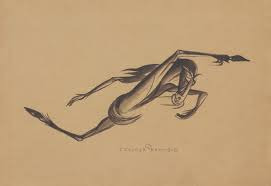
This is the Tikbalang, a mythical creature with humanistic limbs but the torso and head of a horse. It is said to be asleep during the day and in the night it dwells around the trees, leading people out and alone to play tricks on them. The Tikbalang is seen as a folkloric demon and smells of burning hair, ominously hiding in quiet locations. I see the Tikbalang as a fast-paced, cunning and mysterious creature. Looking at this illustration of this demon can create an unsettling feeling, and rightly so, as it has some characteristics of a human mixed with an animal, which is quite peculiar to see. Seeing illustrations such as the Tikbalang may be intriguing and viewers may want to explore and look further into the folklore and mythology to see more creatures, as their curiosity peaks.
Whang Od
Both Filipino Folklore and Whang Od - an artist I chose to focus on - have been deeply involved in culture and identity in the Philippines. Whang Od’s impact on the culture has been so significant that there are tales of her greatness, mixing her stories with a folklore style to describe her journeys. The skill possessed by Whang Od in her “Batok” tattooing style gave her status as a legend throughout the country. She spread the meaning behind her mission and her tattoos openly, expressing the importance of staying connected to the past and history of the Philippines. Whang Od has become a symbol of cultural continuity and resistance against cultural erosion and surviving centuries of colonisation, possessing amiable qualities other Filipinos can look up to, similar to folklores, which teach good meanings and help preserve culture through showing examples in stories. I want my illustrations to have meanings and reasons behind them connected deeply to folklore. Whang Od’s art is a good example of this; When someone recognises her Batok art, they understand the meaning of the lines and the purpose behind her work. I wish for my illustrations to have a strong tie to culture and make people feel the depth and vastness of the Philippines, even with Filipinos being spread around due to diaspora, they can look at Whang Od’s art and feel a sense of belonging and representation.
Whang Od’s Batok tattoos all hold a large significance - to those who wear them and to the culture. Whang Od creates many different tattoo styles, but they all have the same lines and design she uses yet they differ in meaning, all providing a different narrative through the symbols, signs and other parts such as the sun, the moon and more. The tattoos she provides all tell a story. A milestone, an important part of someone’s life, even to commemorate another person’s life, she adds her style and creates a beautiful piece, sticking to her tradition of using bamboo, a thorn or needle and naturally sourced inks to stay as close to her practice of maintaining Filipino culture as possible, ensuring that her work was always to the highest standards to ensure that Batok remained an honorary artwork to have tattooed on the skin, depicting the tough battle for the individual, which is how the tattoos were also done on warriors and women centuries before. I plan to use a similar style to Whang Od to portray my life and my hardships or milestones. I want to tie culture into my lino drawing, so I credit a lot of Whang Od’s artistry as an inspiration as she is an important face in Filipino art history.
With Paul, I decided to work using lino printing. I have been encouraged to create a folklore design that incorporates the visual example of a Filipino traditional folktale. I have designed two pieces of mythical creatures that depict the visual presentation of a folktale. I designed a dragon-like serpent named “the Bakunawa” and a graceful bird with magical powers called “The Ibong Adarna”. I intricately designed both creatures to highlight their power and boldness, capturing their essence in every curve and detail. I also made sure to include elements of their mythical habitats, adding depth to their portrayal. Inspired by these designs and with Paul's guidance, I decided to expand the project. I brainstormed ideas to develop more lino prints, focusing on telling the story of the Ibong Adarna. Starting with the introduction, I depicted the grand scenery of the palace where the tale begins, introducing the key characters. After that, I continued to work on linocuts that depicted the three brothers' quest to locate the Ibong Adarna. Every print captured significant occurrences from their journey, building to the successful conclusion in which the royal father is healed and the tale comes to a joyful conclusion. I would have illustrated other scenes of the tale, such as when the two eldest sons turn against the youngest, however, I wanted to show the elements of the story that depict culture rather than illustrate the storyline.
Bibliography:
Dyrlee Borbon, H. (2023). The Filipino Identity: A Shared Story. [online] Asia Society. https://asiasociety.org/philippines/filipino-identity-shared-story
Perez, G. (2023). Orientalism and the Filipino Identity: Reclaiming Our Own Narrative. Asia Society. [online] 26 Apr. Available at: https://asiasociety.org/philippines/orientalism-and-filipino-identity-reclaiming-our-own-narrati
E
Clark, J. (2016). Philippine Folkloric Creatures amidst a Cultural Identity Crisis • THE ASWANG PROJECT. [online] THE ASWANG PROJECT.
Rodriguez, E.B. (1933). The Adarna bird: a Filipino tale of Pre-Spanish origin incorporated in the development of Philippine literature, the rapid growth of vernacular belles-letters from its earliest inception to the present day / by Eulogio B. Rodriguez. [online] Rodriguez, Eulogio Balan, pp.2–3.
Torres, K.P. (2007). The national myth of Ibong Adarna: A semiological inquiry of the illustrations as texts. Bachelor’s Theses. [online] https://animorepository.dlsu.edu.ph/etd_bachelors/2292/.
Philippine Art Gallery (n.d.). Carlos ‘Botong’ Francisco. [online] PHILIPPINE ART GALLERY. Available at:
Moya, J. (2021). Here Are 5 Things You May Not Know About National Artist Carlo ‘Botong’ Francisco. [online] Tatler Asia. Available at: https://www.tatlerasia.com/lifestyle/arts/carlos-botong-francisco
Gallery, L. (n.d.). LEON ART GALLERY |The-Spectacular-Mid-year-Auction-2020. [online] leon-gallery.com. Available at: https://leon-gallery.com/auctions/lot/The-Spectacular-Mid-year-Auction-2020/1/45
COMMONER (2021). Why Philippine Mythology is a Constant Reminder of Our Roots. [online] Medium. Available at: https://mediacommoner.medium.com/why-philippine-mythology-is-a-constant-reminder-of-our-roots-cbaa4fafda9a#:~:text=Through%20folklore%2C%20we%20are%20given.
Eslit, E.R. (2023). Resilience of Philippine Folklore: An Enduring Heritage and Legacy for the 21st Century. IJELR: International Journal of Education, Language, and Religion, [online] 5(1), pp.9–20. http://jurnal.utu.ac.id/IJELR/article/view/7504/pdf#

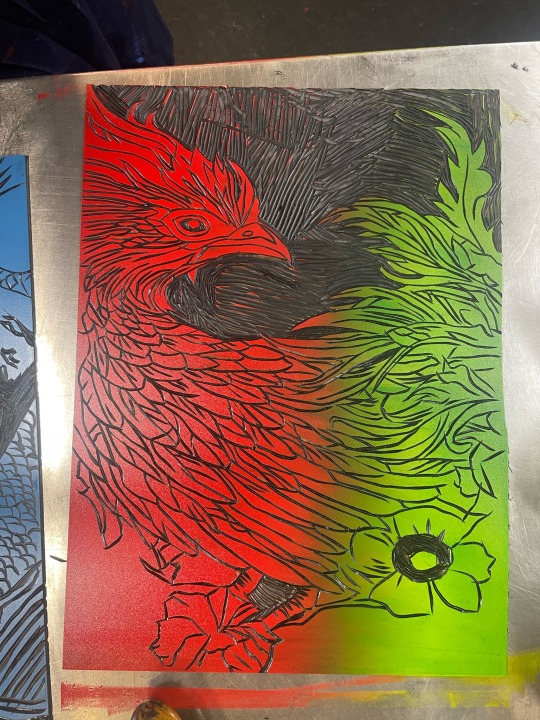

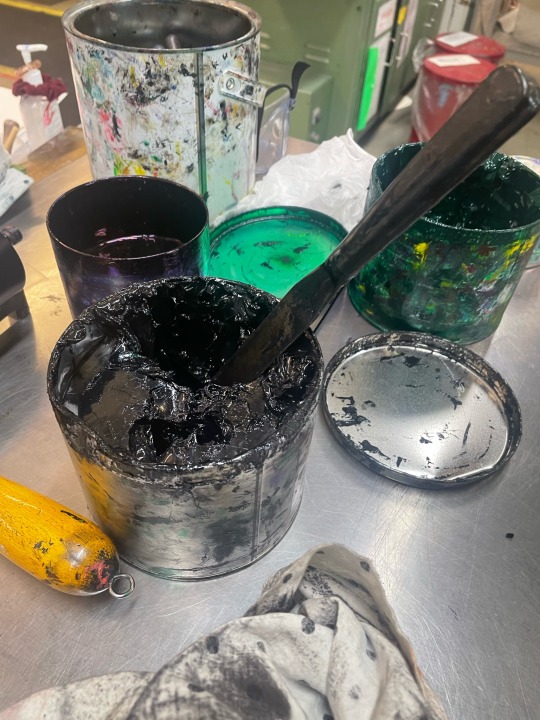
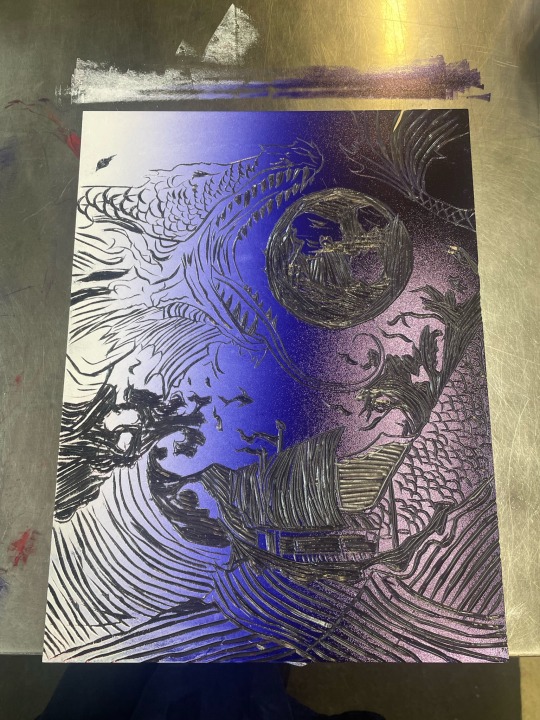
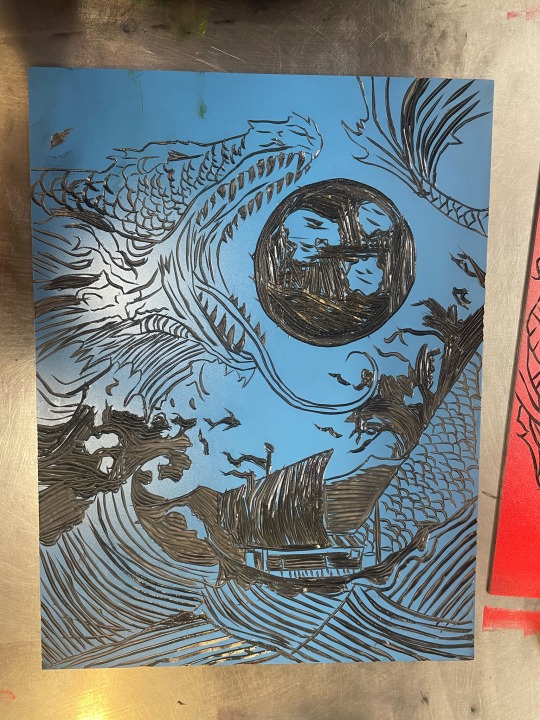

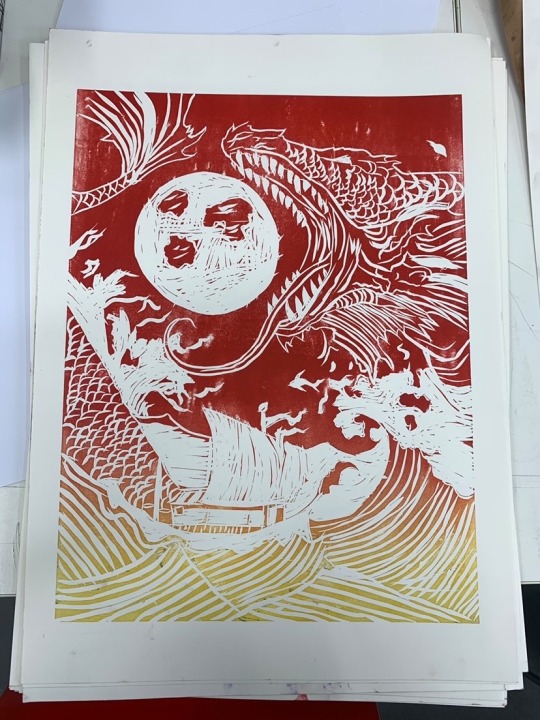
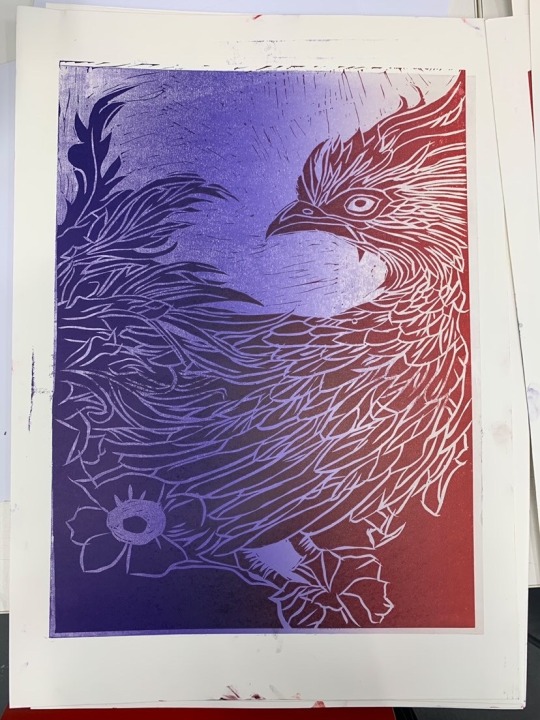
0 notes
Text
1) this article I chose was a study that delves into the history of Philippines and how western culture diminished the value and sentiment behind it. It was done by a South East Asian research centre, which is a reliable source for information regarding Filipino history. I chose this because it studies how there is a decline in cultural significance of traditional Filipino tattooing, how the occupation and colonisation had an impact on the future of the tradition.
2) there are a lot of groups in the Philippines that have a history of cultural tattooing, with distinct differences in designs, like the bikking tattoos and symbols of fertility and beauty. After American occupation, the meaning and significance behind these designs faded. there was a loss of symbolism and more of a religious influence on tattooing. This relates to my project as I want to highlight the history of Filipino culture, and remember its importance to Filipino tradition. This study discusses how the meaning behind the tattooing as a procedure and an art slowly declined and became irrelevant post colonisation.
3) this text discusses how the effects of westernisation and modernism has made irreversible changes to how we now see cultural tattoos. How they became less about valor and warrior-like to more Christian influenced, due to the occupation changing the religion of the Philippines and demonising the meaning of origin behind Filipino tattoos to indoctrinate their beliefs into the state. It is particularly interesting to me as I think that preserving the meaning behind the original traditional Filipino tattoo art is necessary to keep the remembrance of Filipino culture, how there was a line of warriors and strong patriotism before the Westernisation.
4)
“She proudly said: “At the age of 62, I’m one of the youngest women who have traditional tattoos. . . . But my art of having tattoo is for its preservation.”
“there is a fast decline in people wanting tattoos linked to their heritage across many countries, not just the Philippines. This could be due to a lack of education regarding the effects of modernisation and the western influence, so i find it highly important to portray how beautiful and detailed Filipino culture is through these traditionally tied tattoos.”
“Traditional Filipino tattoos, including the ones from the Cordillera region, were used by these predominantly young diasphoric Filipinos as part of their identity politics to emphasize their ethnic origin as distinct from those of the dominant whites as well as from those of the other minority ethnic groups. The activities of this organization were the primary referent of Kips’ “globalization” concept”
Young Filipinos want to be connected to the roots of their culture, but they do not know much about the history due to diaspora which is the spreading of a population across regions. People who grew up outside of Philippines want to learn about their heritage and don't really know much about their history because of colonialism”
this is common among many countries around Asia and Africa, where today's youth may feel disconnected from their culture due to colonisation.
“he proudly stated that at least three of her younger sisters have traditional tattoos to manifest their support for this cultural practice. Definitely, more cultural advocates, scholars and students should help in the preservation of the fading Philippine tattoos by having their own bodies marked.”
elders like to show their appreciation for their culture and want to carry their ancestry to the younger generation. There is a want for more inclusion of culture among Filipinos, they want to keep their culture strong and proud, however it has become difficult to maintain. I think that by investigating this, I can learn about the culture myself and also become more knowledgeable about my own background as this opened up a conversation between me and my parents about my origin and the different places and tribes in the Philippines.
5)
Apo Whang-Od is like a symbol in the text, representing the effort to keep Filipino tattoo culture alive. Just as the Tatak ng Apat na Alon Tribe works to celebrate Filipino heritage through tattooing, Whang-Od does the same. Her story shows how tattoos are meaningful symbols of identity and heritage, echoing what the text discusses. In short, she's a key figure in preserving and reviving traditional Filipino tattooing, symbolizing Filipino pride and resilience.
Highlighted pdf
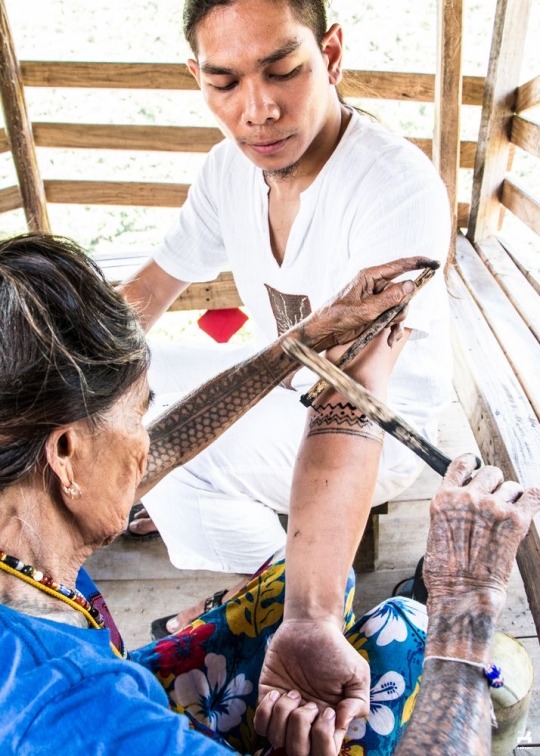

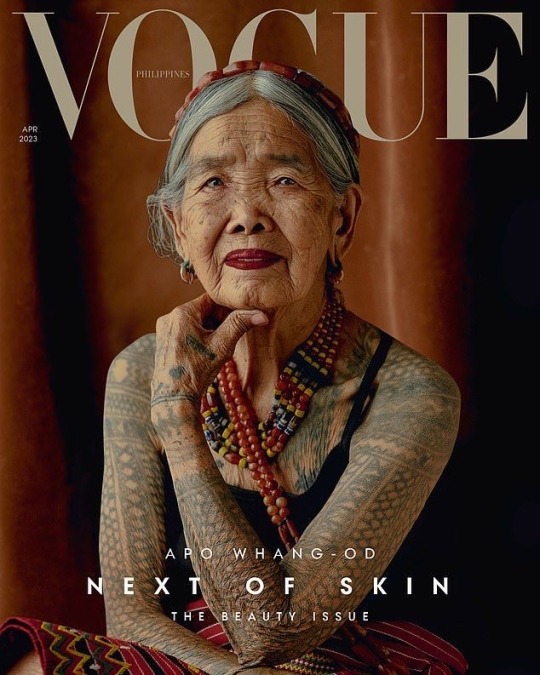

1 note
·
View note
Text
Artist research: Whang od
For this project, I have taken inspiration from the Filipino artist Whang-Od, a lady that started tattooing from the young age of 15. She first learned from her father, breaking stereotypes of women using her exceptional talent and skill potential that her father believed she possessed. Her art originates from the Mambabatok culture, incorporating designs like eagles, for warriors who killed enemies, python skin and other geometric designs.
Whang-Od began tattooing and travelling far to villages around the Phillipines. Many communities would request for her to imprint symbols carried through their ancestry to individuals reaching a significant point in their lives. For men, she would do bikking tattoos, a chest tattoo that stretched over the shoulders and arms, taking several days to complete and in return, the individual paid in food, rice or a large pig. Women were also tattooed, to show fertility and beautification. As for tattooing materials, she would use completely organic and naturally sourced materials, consisting of charcoal and water that is pricked into the skin using thorns from calamansi or pomelo. This is known as batok and is actually a lot more painful of a method than modern tattooing techniques. She then adapted a signature tattoo in 2017 that consisted of three dots, symbolising herself and her blood-related apprentices and also the next generation in her art.
Every tattoo Whang-Od made told a story. They marked milestones, celebrated victories, and symbolized status in the community. Warriors often had intricate designs that showcased their bravery and accomplishments. Women, too, wore these tattoos as a badge of honor and beauty. The designs were as unique as the individuals wearing them, each carrying a specific meaning:
Filipino tattoos were considered terms of honour in the past, especially for warriors who wore geometric designs and animal emblems that stood for bravery. Moreover, these tattoos had mystical significance and were thought to provide prosperity and protection. Common natural symbols for development and life were the sun and waves. Together, they created a rich legacy of tattoo art in the Philippines that combined nature, spirituality, and power.
In traditional tattoo art from the Philippines, animals are very symbolic and each one stands for a unique quality. For example, the Philippine Eagle, sometimes referred to as the "Haring Ibon" or King of Birds, represents freedom, authority, and the spirit of the Filipino people. The carabao, also known as the water buffalo, represents patience, persistence, and hard work—values that are reflected in Filipino farmers. The Tamaraw, an indigenous animal in the Philippines that represents strength and rarity and reflects the resilient nature of the Filipino people, is another noteworthy figure. The Sarimanok, a legendary bird in Filipino culture, is also connected to good fortune, which makes it a well-liked option for people wishing for luck and wealth.
Nature-inspired tattoo designs in the Philippines have deep symbolic meanings that evoke the natural splendour of the nation. These landscapes, which range from breathtaking coasts to deep woods, are skillfully weaved into tattoos to convey distinct stories. Mountains stand for the path of conquering hurdles and are a sign of strength and resiliency. The bravery to sail through life's continual changes is embodied by ocean waves. Bamboo is a sign of adaptation and flexibility, while the sun is a symbol of vitality and optimism. Including these components in tattoos, people convey experiences and trips while also honouring the landscapes of the Philippines. The goal of traditional tattoo art from the Philippines is to provide narratives via symbolic significance, more than just looking aesthetically pleasing.
As I craft my linocut design, I'm inspired by Filipino tattoo art, aiming to express my identity through symbols. I carve geometric patterns resembling traditional tattoos, symbolizing resilience and self-discovery in my journey. Animal figures like the Philippine Eagle and Carabao represent authority, hard work, and perseverance, shaping my identity.I also include nature symbols—the sun, moon, and waves—symbolizing life's cycles and growth. These elements pay tribute to my cultural heritage and my personal journey. Each stroke of the carving tool adds layers of meaning, reflecting who I am and the values I cherish.Through this artwork, I celebrate my identity, embracing my cultural roots and individual experiences. I hope to inspire others to reflect on their own stories and connections to the world around them.
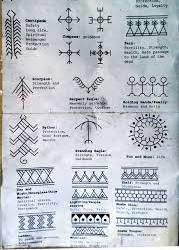
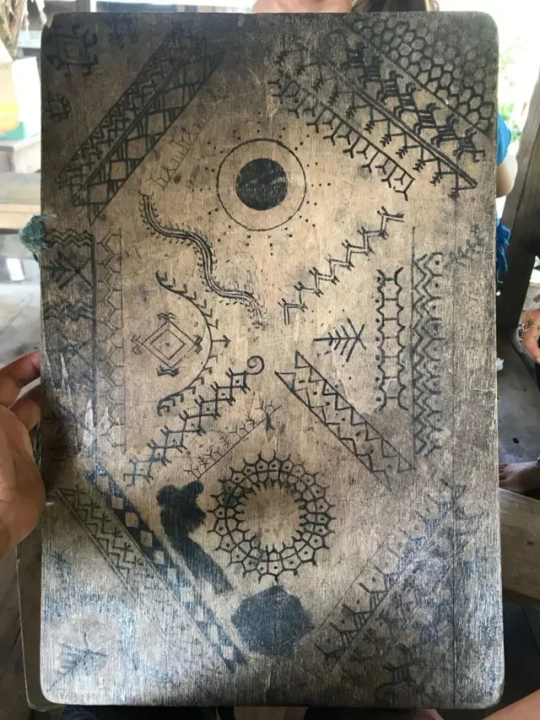

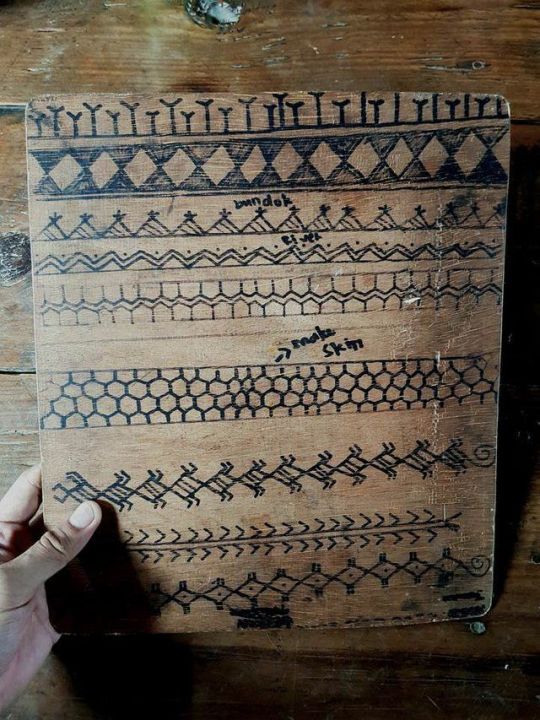
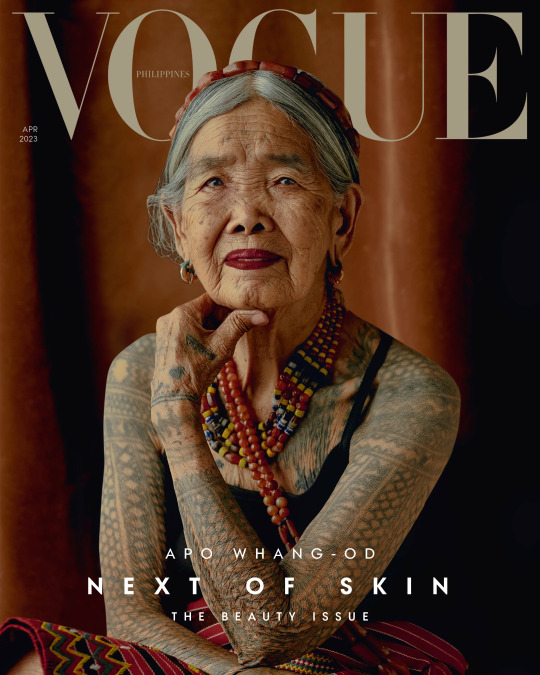
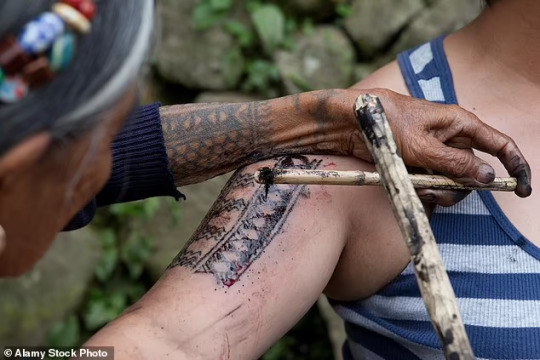
1 note
·
View note
Text
I am going to begin this project with the idea investigates identity; Identity contains two subjects - culture and tradition. Exploring previous discussions and feedback from Paul and applying it to this project. I will be working using printmaking, which piqued my interest as my goal of being able to incorporate my heritage into a tattoo illustration from project 1, which allows me to connect with the project on a personal level. The tactile and intricacies of doing lino and etching was also very interesting to me as a process, as I was able to see the project develop further the more I added to the piece. As I have previously done work similar to this (Project 3), I was happy to begin this piece.
Prior to this project, project 3 allowed me to produce multiple lino prints, seeing my work coming together as I added more carvings into the lino made my work feel more personal than other projects, which motivated me to do printmaking further. I decided to illustrate a detailed tree during this project, which was inspired by the book “The Word for the World is Forest.” The complexities of this depiction was powerful as a visual metaphor, connecting my perspective of the book artistically with the expression and theme I depicted from the book as I read it.
Despite working with lino prints in previous projects, being able to incorporate etching into this project in particular was very intriguing to me. Etching was not a priority in project 3, I got to study the technique in more detail, allowing me to develop my skills as an artist further and provide me with a new attitude to my work in a sense that I could try many different styles onto my lino piece.
Furthermore, the wooden box that I completed for project 1 incorporated fine details and lines, served as a display for my heritage, in particular, Filipino tattoo designs, which helped me build on understanding visual art as a narrative medium. With this project, my intention is to build on past experiences, making intricate tatto illustrations that showcase both my culture and heritage as well as building on the idea that my cultural identity grows further.
Ultimately, I aim to use the experiences from project 1 and project 3, where I was able to see how nature and identity worked together to create a form of expressive art. Exploring these ideas have given me a fresh perspective, which I plan to show in these new printmaking project. As an artist, I get to develop my personality and include it into a piece using creativity, which allows me to flow freely and explore more with etching and lino prints in comparison to project 3, which had a set aim and the project had a set title.
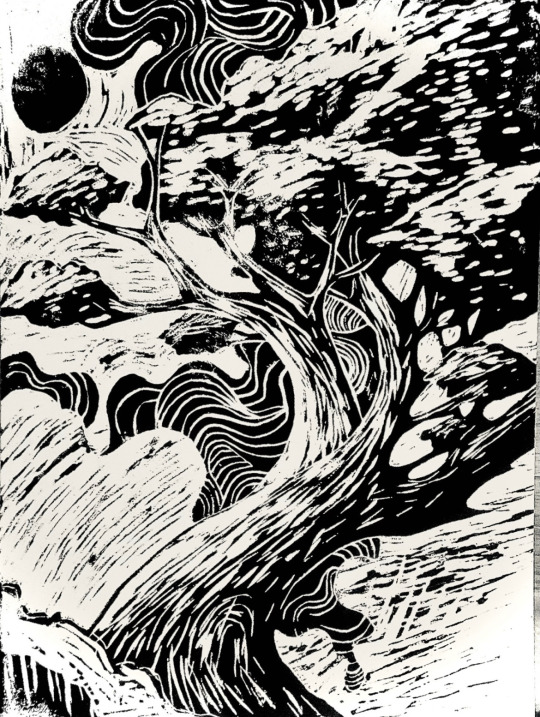


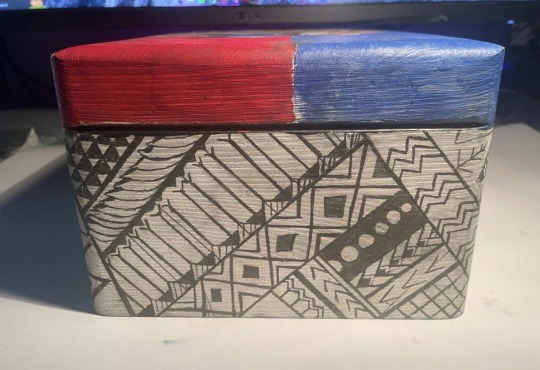


0 notes
Text
'The Word for World is Forest' Essay
‘The Word for World is Forest’ is a novel written and published in 1972 by Ursula Le Guin, an American science-fiction writer. The story is set in the fictional planet of Athshe, which is a part of a colony of planets being taken over by the Terrans’ (humans) of this universe. The Terrans’ call the planet ‘New Tahiti’ as they take the land’s resources and take control and authority over the Athsheans’, the native people of Athshe. To summarise, the book is about colonisation and how the colonised begin a resistance against the people that oppress them. In this case, the Athsheans’ are being unfairly treated, while the Terrans believe themselves to be superior and in charge of what they get to do on a planet that isn’t their own.
The book very heavily explores the ecological theme, and also demonstrates social and political issues in this fictional world that can be relevant to reality. For the ecological factor of the story, it is shown how the planet of Athshe is a very lush planet and the Athsheans’ are very connected to their nature. “The Athsheans’ live in harmony with the forest, and their lives are inextricable from the nature that surrounds them.' The title of the novella itself has a significant ecological meaning, “The human anthropologist Raj Lyubov reveals that the Athshean word for ‘world’ is also their word for ‘forest’`which speaks to the interconnectedness of Athshean society and nature.” The Athsheans’ existence themselves is a good representative for proving the importance of conserving and appreciating wildlife, However, the Terrans’ do the complete opposite. “Most humans in the novella believe both that nature is a commodity separate from their own identity, and that nature is something to tame rather than respect.” Destroying Athshe’s ecosystem to take away resources and hunting “for fun” is an example of Terrans’ unpleasant attitude and disregard towards the Athshean environment. Additionally, is it said that Athshe’s presumed fate was foretold just by the state of the Terrans’ planet Earth, which had become a “desert of cement.” This comment shows the extent of the Terrans’ negative influence on land.
There are several other notable themes in the book as well, such as: anti-colonisation, indigenous rights, pacifism, and resistance. Originally, Le Guin wrote this book as a response to the Vietnam War, she wanted to demonstrate her anti-war views through the extremities of violence and the attitudes of characters. Don Davidson is a prime example of said violence and attitude. His treatment of Athsheans’ is discriminatory, calling them “creechies" in a derogatory fashion and regarding them as if they’re not even human. This refers to the racism and treatment of indigenous people in reality. What makes this situation more extreme is that the Athsheans’ are described to be a pacifistic race, meaning there is no existence of violence in their nature or lives whatsoever. For their treatment to become so harsh that they create a violent resistance is very telling of how bad discrimination can get. “The story displays admiration for the Athsheans’ pacifistic society. Le Guin presents the resistance by the Athsheans’ as a powerful and necessary response to colonisation.” (Stiltner, 2023) “Le Guin was a staunch proponent for defending the rights of indigenous peoples and was also against colonisation and imperialism.” This is very much evident through her characterisation of the Athsheans’.
“The Word for World is Forest’ can evoke an intense mixture of emotions and reflection. It creates a strong sense of worry for the planet's vulnerability and the effects of uncontrolled exploitation was caused by the graphic depiction of environmental destruction. The loss of Athshe’s lush forests felt like a symbolic warning, showing that we need to actively take care of and protect the environment. The social issue of injustice for races is also a real occurrence that very much exists in the present, for example you could say this book still has relevancy to today's issues, as reported by Zimbalist (2017) there are still instances of injustice to communities committed by governments such as the building of Olympic stadiums, which forces tens of thousands of people out of their homes and relocation, and local workers were paid unfair rates of $1.83 an hour during Rio's 2016 Olympics. Medical services during this time were also difficult to reach; The games also brought false promises of cleaning Rio's polluted waterways and forced many people to undergo turmoil of demolition of their homes to create new space for the stadium. This is a example that human are overriding the natural environment with urban societal buildings to create a perfect lifestyle and benefit humans.
In creating my printmaking project for Paul, I chose to carve a detailed tree using lino. I did this to visually represent the deep connection between nature and the characters in Le Guin’s Book. The simplicity of the tree may reflect the straightforward beauty of the Athsheans’ harmonious relationship with the environment, resonating on the balance between humanity and nature. Additionally, it may be considered a universal symbol of life, growth and renewal, allowing viewers to connect with the broader themes of the book.
Stiltner, N (2023) ‘Themes,’ enotes.com, Available at: The Word for World Is Forest Themes - eNotes.com
Nature and Ecology Theme in The Word for World is Forest | LitCharts
Andrew Zimbalist (2017) Olympic Myths, Hard Realities:
0 notes
Text
Graphic Media
For my Graphic media piece, I decided to work with the portrayal of utopia and dystopia as chosen for my modernity research. I started to visualise my scene and wanted to make it simple for myself as I find it very difficult to animate, so I portrayed a tube scene from a 2D view, I wanted to reference them from normal London tubes. I considered the composition to better highlight the character that is portrayed within the animation. The character is shown to be in a seemingly normal environment as he is commuting through a utopian and dystopian landscape. The contrast shows with the calming music in the background with the loud tube train tracks screeching in the background.
The message I wanted to portray in my animation is how even when a world is dystopian it can seem natural and a part of normal life, similar to how in real life, we become used to new technological improvements as it gets newly added to our daily lives. I wanted to show dystopia in a casual way, so I presented it as being in the background in an otherwise normal and natural scene of being on a train journey.
When making my animation, I started off by using Procreate to illustrate my scene. As part of the process, I used the new app called Procreate Dream which has very similar features to After Effects. I experimented and used its assets in my illustration to create an animated scene. I started off with animating a blinking loop for my character to give him life. After opening up the scene of my character sitting peacefully listening to music. To develop the scene more, I added walking cycles of two people to give the scene more life. Then, I created the background view from the train windows to showcase the environment where my character is travelling. I found this process quite tricky since I was learning how to use a completely new software at the same time.
0 notes
Text
Reading rep 2 "Alone Together" by Sherry Turkle
The second reading I chose is chapter 8 of “Alone Together: Why We Expect More From Technology and Less From Each Other’ by Sherry Turkle. It is a very intriguing read as it goes into a lot of detail the impact technology has caused on people and how being online and connected to the internet has become a natural and normal every day part of life. It starts off interestingly with the subject of cyborgs, which are known to be popular in science fiction and can be related to utopia because of technological developments. The key concept and idea of this reading is technology, which is very relevant to modernity since it is always constantly developing and improving. Turkle writes about the experiences and stories of people to demonstrate and portray how technology has become deeply involved with the lives of people. “Within a decade, what had seemed alien was close to becoming everyone’s way of life.”(p.152) This shows how in the past, when technology was first introduced it seemed ‘unnatural’ and ‘alien,’ but then over time had become normal.
The standpoint Turkle is trying to make through this writing is to present how technology also not only affects how people live their life, but also how it affects human relationships and how they interact with each other. I find it really interesting how Turkle brings up how technology affects a person’s identity too. With the mention of the game ‘Second Life’ and how making an online persona and avatar to present on the internet can also count as a person’s identity. It’s interesting because I am very familiar with how people are online. “In games where we expect to play an avatar, we end up being ourselves in the most revealing ways.” (p.153) I agree with this statement as I have seen this for myself when playing games with other people online.
0 notes
Text
Reading Report 1 ‘Communist Manifesto’ by Karl Marx
I read a series of passages from the ‘Communist Manifesto’ written by Karl Marx and Friedrich Engels in 1848. The first passage talks about class struggles. The difference between people opposite one another such as the “freeman and slave.” (p.3) It mentions how in history, there is a “complicated arrangement of society” (p.3) since there are many orders and differences in social ranks. This excerpt is about the modern bourgeois society and how it has established “class antagonisms,” meaning new forms of oppression and struggles for people in society.
The main idea the reading talks about is the development of modern society. Things such as the discovery of “commerce, to navigation, to communication by land,” (p.3) has been created as a result of this development. This is an example of modernity since it talks about how the modern bourgeois “is itself the product of a long course of development.”(p.4) The bourgeoisie is the capitalist class whose Modernity can be seen as a result of changes over time, from the old to the new. The passage also mentions the revolution in history. “The bourgeoisie cannot exist without constantly revolutionising the instruments of production.” The term proletariat is used which describes the working class in a Marxist context.
I think the writing makes a standpoint on how the development of the industry causes some difficulties. How the existence of the bourgeoisie is no longer suited for society as it causes issues such as wage labour. How the development of the Modern Industry will cause the fall of the bourgeoisie and the proletariat will gain victory in society. I find it interesting how this reading goes into a lot of detail about the effects this development causes. I think what was written here is informative and what’s even more intriguing is that this book holds the views of Karl Marx himself, who was well-known for his common critique on capitalism.
0 notes
Text
Modernity essay Utopia/Dystopia
The concept I chose is Utopia and Dystopia, which are two opposite concepts that started off as literary forms. The term ‘Utopia’ refers to “the imaginary world that is completely idyllic, where all people live in harmony.” (Doan, 2020) It’s a term coined in 1516 by British writer Thomas More in his book ‘Utopia.’ For a utopian setting, authors would usually imagine and portray the perfect society. On the other hand, Dystopian society “is all about pessimism and often warns us about the potential drifts of an ideology of a situation.” This concept is used to “show our need to understand the world we live in.” While this theme can be portrayed fictionally, it also invites people to reflect on our current state of reality, seeing as research on its nature “has long since served as a form of critical reflection on contemporary society.” (Mugnier, n.d) The word ‘utopia’ comes from the Greek words ‘ou’ meaning ‘no’ or ‘not’ and ‘topos’ meaning ‘place. ‘ (Lowry, n.d) Both utopia and dystopia share science fiction and fantasy characteristics which are set in a futuristic environment where technology is used to “create perfect living conditions.” In novels with this concept, they don’t focus on this factor, instead, they focus on “the psychology of its effects, the emotions of the characters who live under such conditions.”
Utopia and Dystopia are believed to be a “product of modernity” as it “has always always been hinged upon an assessment as to whether humanity would be able to fulfil the promise of socio-economic, political and techno-scientific progress.” (Vieira, 2020) Since modernity is linked to the “exponential growth of the human population.” According to Vieria, utopians would wish to “escape from the worst anxieties surrounding overpopulation” as it would “reinforce their belief in the promise of modernity.”
The topic of Utopia/Dystopia interests me because I am familiar with this topic outside of illustration as well. Cyberpunk 2077 is an example that I know of and enjoy. It portrays a dystopian world that is disguised in a utopian vision. Experiencing this video game helps my visual understanding of the concept and its ambience. It fully portrays their duality as well as technological development. It shows how it may reflect today’s society which includes the advances in health care, education and transportation however these advances lead to corruption in the dystopia conveyed in the games. Additionally, an artist on this concept is Hieronymus Bosch, who painted ‘The Garden of Earthly Delights.’ painted between 1503 to 1515. It’s a triptych painting with each panel representing ‘The Garden of Eden,’ (utopia) ‘Hell’ (dystopia) and the “flux between the two.” (Heller, n.d) I am taking inspiration from this concept for my project to visualise utopia and dystopia, the change it causes and the duality between them.
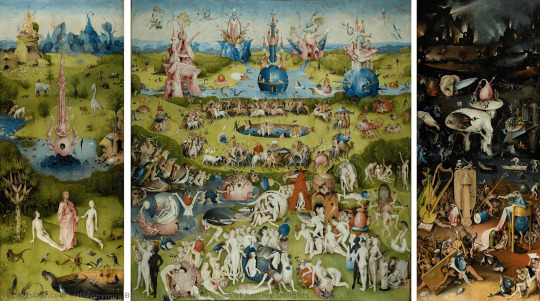
Bibliography:
Doan, N (2020) ‘Utopia and dystopia - Bac d’anglais de specialite’, Aufutur, Available at: Utopia and dystopia - Bac d'anglais de spécialité - AuFutur
Heller, D (n.d) ‘Dystopia Utopia duality’ artgreeT, Available at: Dystopia Utopia duality – artgreeT
Mugnier, P (n.d) ‘Utopia and Dystopia as Critical Representations of Reality, Humanities and Arts and Society,’ Available at: Utopia and Dystopia as Critical Representations of Reality – Humanities, Arts and Society (humanitiesartsandsociety.org)
Vieira, P (2020) ‘Utopia and dystopia in the age of the Anthropocene’, esbocos, Available at: Utopia and dystopia in the age of the Anthropocene (redalyc.org)
0 notes
Text
Artist research
Apo Whang-od Oggay, also known as Maria Oggay, is a well-known figure in her community for her work as a traditional tattoo artist. She is from a village in Buscalan within the Tingalayan Kalinga in the Philippines, (Ratcliffe, 2023) where she works and has always lived. She is the country's ‘last and oldest ‘mambabatok’, (Melanes, 2013) a group of Kalinga tattoo artists with a historical and cultural tradition of tattooing warriors of the Butbut people, which is her ethnic Kalingan tribe. (Almendral, 2017) Butbut warriors would traditionally earn their tattoos from the deeds they make when in combat. However, with the end of tribal welfare in Buscalan, Whang-od no longer needed to tattoo warriors. She still tattoos with her tribal designs, though she transitioned to working with tourists instead due to her rise in popularity around the world.
Whang-od’s work expresses identity as she is preserving the ancient tradition of tribal tattooing that defines the battle experiences/the beautification of the Kalinga tribe men and women. The traditional tattooing practice known as ‘batok’ is the technique of using a bamboo stick and thorn. (Phil life, 2018) This has been used for a thousand years, making it a very well-known part of the culture. Whang-od keeps this historical tradition alive by being the last ‘mambabatok’ alive in her community, so in a way, she is keeping an important part of her people’s collective identity alive. In an article, Whang-od’s own tattoos were mentioned. ‘Her body could be described as a piece of art. It tells the story of her life, work, and even some former romances.’ (Edward, 2023) Her own tattoos tell her life story and make up a huge part of her identity. For Filipinos, getting indigenous tattoos ‘carries a long history,’ and can be seen as ‘reconnecting with their roots and their selves.’ (Carpio, 2023)
An idea that relates to Whang-od’s work is how ‘Identity invokes identification with a group/others.’ Her tattoo designs help identify the people of her Kalingan tribe. It is their way of representing themselves to others and it represents their life experiences. It is relevant towards my graphic media project as it’s a historical tradition within my culture. Through learning about this artist, I feel closer to my heritage/origins, which is the theme for my box. I chose this artist because tattoos are an interest to me. I enjoy looking at the fine line detailing and meaning behind each individual tattoo as they show worth to one's identity.
Amendral, A (2017) ‘At 100 or So, She Keeps a Philippine Tattoo Tradition Alive’, The New York Times, Available at: https://en.wikipedia.org/wiki/The_New_York_Times
Carpio, A (2023) Apo Whang-Od And The Indelible Marks of Filipino Identity, Available at: Apo Whang-Od And The Indelible Marks Of Filipino Identity - Verve times
Edward, D (2023) From warriors to Vogue: 106-year-old tattoo artist preserving an endangered tradition, itvX, Available at: From warriors to Vogue: 106-year-old tattoo artist preserving an endangered tradition | ITV News
Melanes, M (2013) ‘Skin as archive of history, culture, identity’, Philippine Daily Inquirer, Available at: https://newsinfo.inquirer.net/485029/skin-as-archive-of-history-culture-identity
Phil life (2018) Mambabatok: Tattoo tradition in the Philippines: Available at: Mambabatok: Tattoo tradition in the Philippines | Culture | Phillife.co
Ratcliffe. R (2023) ‘Indigenous tattooist becomes Vogue's oldest ever cover star art 106’, The Guardian, Available at: https://www.theguardian.com/world/2023/apr/03/indigenous-tattooist-apo-whang-od-vogue-oldest-cover-star-106-philippines
0 notes
Text
Reading report
I read the article about ‘Diaspora Aesthetics’ written by Sieglinde Lemke. This talks about the diaspora experience when people from a group are relocated or forced out of where they live and where they come from. Sieglinde Lemke talks about ‘diaspora art’, and how it is portrayed in art from African artists such as Jean-Michel Basquiat. The aspect of identity the article discusses is origins, cultural identity and home. Lemke’s article is mainly about how diasporic experiences can be shown through what artists who experienced them make, which impacts visual culture and what artwork communicates to the viewer.
The key idea in this essay is how diasporic art can be linked with and merged with visual culture. Lemke goes into the idea by examining the visual representations of the African diaspora produced by African-American artists from the 1980s and 1990s. Another concept that Lemke introduces is the ‘homonymic pun: routes/roots’ and the ‘metaphor of riot’. ‘Roots, meaning imagined/real origins’ and ‘routes,’ meaning ‘the act of travelling which defines the diasporic condition.’ The term ‘riots’ can ‘refer to a symbolic act of rebellion’ which can be presented ‘chaotically’ in art.
Lemke makes the argument that ‘it is safe to argue that diaspora art depicts the act of the consequences of either forced or voluntary dispersal.’ She expresses this strongly throughout her writing. ‘An acceptance of one’s otherness and cultural origins is vital to the self-understanding of diasporic people’ Lemke says this is ‘fundamental to the diasporic imaginary,’ so she strongly makes her point.
What is interesting about how Lemke writes is how she knows a lot about the topics, shown through her many references to other people’s words and comments on the subject. This is relevant to me as it reminds me of my family and how they have also moved away from home for a new life.
0 notes
